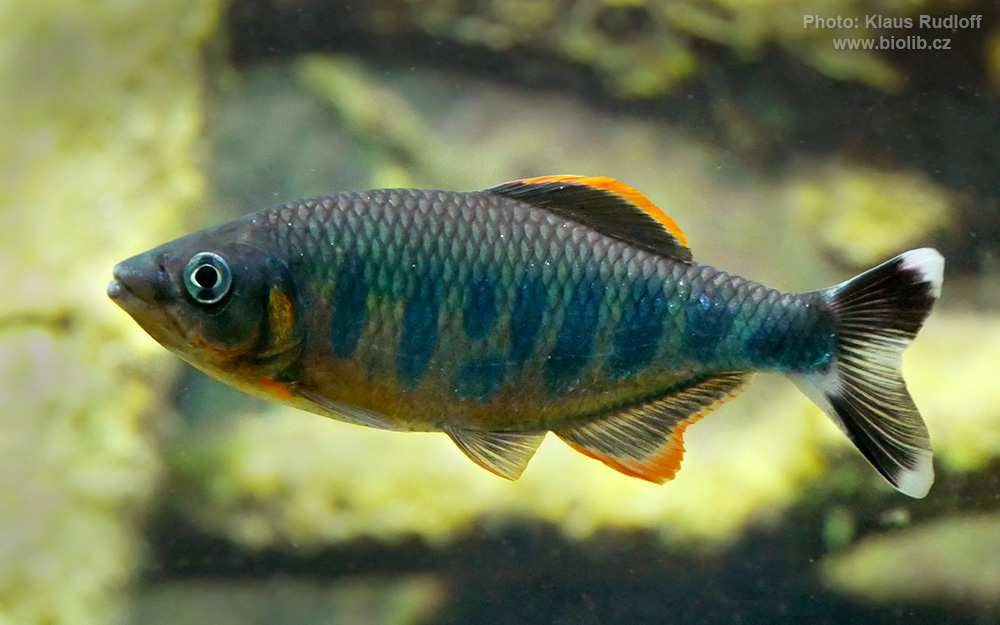Opsarius ardens

Classification
Distribution
Asia: Sita-Swarna River system in the Western Ghats of Karnataka, India.
Max length : 8.7 cm SL
Short description
Dorsal soft rays (total): 13; Anal soft rays: 16.
Barilius ardens can be distinguished from B. canarensis and B. malabaricus by having a color pattern consisting of a row of 7-9 large, vertically-elongate, bluish-green blotches 4-6 scales high and 2-3 scales wide along the length of the body, of which in large adults the first three blotches are fragmented into a smaller row of blotches (vs. single or double rows of spots along the length of the body, the first row with 9-13 round or oval bluish-green spots 1-2 scales high and 1-2 scales wide and the second row, if present, with 3-4 smaller spots reaching up to the anal-fin origin).
It differs from both B. canarensis and B. malabaricus by having 5+4+3 (vs. 5+4+2) teeth on the fifth ceratobranchial.
It further differs from B. canarensis by having 16-18 (vs.14-15) predorsal scales, and having the dorsal and anal fins margined with bright orange (vs. broadly margined with white).
In addition, it can be separated from B. malabaricus by having 10½ (vs. 11½) branched dorsal-fin rays and 13½ (vs. 14½-15½) branched anal-fin rays.
It can be disinguished from B. bakeri by its unique color pattern, consisting of a row of 7-9 large, vertically-elongate bluish-green blotches 4-6 scales high and 2-3 scales wide along the length of the body, of which in large adults the first three blotches are broken up into a smaller row of intercalate blotches (vs. only a single row of spots along the length of the body); its fifth ceratobranchial with 5+4+3 (vs. 5+4+2) teeth; and the dorsal and anal fins margined with bright orange (vs. white) (Ref. 100448).










